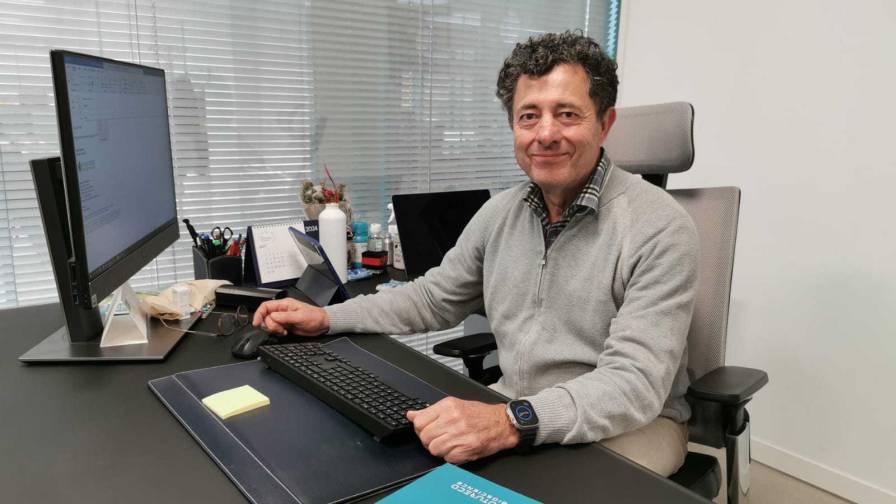UPL Takes On The World
United Phosphorus Limited (UPL), headquartered in Mumbai, India, surprised the agrochemical world in 2006 with its purchase of Advanta. UPL’s strategy has been to acquire smaller entities instead of very large companies. “UPL looks at every business opportunity on its merits,” says Chairman and Managing Director R.D. Shroff. “We have found the return on capital on smaller acquisitions to be better than larger ones. Also the integration effort required for smaller acquisitions is easier.”
Acquiring Market Share
UPL has been consistently and aggressively following a strategy of adding new products to its kitty, as well as additional acquisitions of popular brands and registrations. Recently it was in the news for having acquired Vendex (fenbutatin oxide), Supertin (triphenyltin hydroxide), and worldwide rights (excluding Asia Pacific) of Londax (bensulfuron methyl) from DuPont. In another important deal, Stam (propanil) was acquired on a worldwide basis from Dow AgroSciences LLC. In 2006, UPL acquired three molecules from Bayer — Asulox (asulam), Dipterex (trichlorfon), and Metasystox (oxydemeton methyl) — all of which have excellent brand value. In the past, the company has acquired Blazer (acifluorfen) from BASF, Surflan (oryzalin) from Dow, and Devrinol (napropamide) from Zeneca. UPL expects to increase its turnover considerably, and establish a stronger product portfolio for key crops globally.
The company’s strategy to grow its business globally, both organically and through acquisitions, is depicted in its recent acquisition of the generic agchem marketing company Evofarms in Bogota, Colombia, which has several product registrations in its country and a distribution network covering more than 100 customers. In mid-2007, UPL acquired 100% of crop protection firm Icona S.A and Icona San Luis (Buenos Aires). The purchase of Icona, with its 35 registrations in Argentina and distribution network of more than 1,000 customers, gave UPL the opportunity to expand its presence in that country. Another major crop protection firm, Cerexagri, joined the UPL family in 2007, bringing with it its manufacturing locations in China, France, Italy, Netherlands, and Spain. Along with previously acquired Reposo (Buenos Aires) in 2005, UPL is now closing in to be one of the leading solution providers to its customers.
Venturing Towards Opportunity
The company’s growth has not just been through acquisitions, but through joint ventures and strategic partnerships, as well. UPL continued its partnerships with Japanese companies in March 2008 when it set up a joint venture with Japanese chemicals producer Hodogaya Chemical. The venture, Hodogaya UPL, was set up in Tokyo, where UPL could expand its business in the promising Japanese market. In September 2006, in its third international initiative in one month, UPL set up a joint operations with Japanese players Ishihara Sangyo Kaisha (ISK) and Mitsui to produce and market specialty products. Under the terms of the joint venture, UPL manufactures and sells the products developed by ISK, using its distribution network to supply the products across various global markets. Jai Shroff, CEO, says: “UPL established the joint venture as an important step to develop, register, and market its own products in Japan and seek wider opportunities for cooperation with various industry partners.”
Seeding Growth
In 2006, the UPL Group got into the seed business when it acquired Advanta Netherlands Holdings, which Jai Shroff calls “one of the most exciting businesses in our portfolio — which is not to say that we are not excited about our agchem business – but we believe that the agchem business will continue to grow with or without acquisitions.” The company is handling the Advanta business differently from its other acquisitions; Jai Shroff says “it is independent of UPL and is run by a separate management team headed by its CEO Ram Kaundinya, since UPL and Advanta are very different businesses. Advanta has proprietary germplasm while UPL is in the post-patent space and there is not much overlap between the two businesses. UPL is considering various strategies of integrating the front end for UPL and Advanta, but is still evaluating its options.”
The Way Forward
UPL has done so much in the past three years, making bold moves and raking in soaring returns. What does the next year hold for the company? “We believe that 2008-09 will be promising years for our business,” reflects Jai Shroff, acknowledging that UPL will benefit from the integration of the large number of acquisitions made over the last few years. This doesn’t mean that the company will take a break from looking for opportunities. “We believe that the way forward for UPL is to grow organically — though there are certain geographies where we may look at acquiring businesses.”
It’s hard to think of an area where UPL has not yet made its mark, but Shroff has several in mind. “There is a good chance of cooperation with R&D driven companies in Japan who have proprietary products in their portfolio but limited presence outside Japan. Additionally, UPL can provide competitive manufacturing opportunities to companies under toll manufacturing agreements, who still manufacture most of their proprietary products in Japan, where they have high labour cost. With our strengthening with the Japanese companies, we are always looking at opportunities and being their preferred supplier of technical products. UPL has already started toll manufacturing of some proprietary products from a top Japanese R&D company.”
Another area where the company may next turn its versant eye is towards the US, where UPL is selling Topsin and Assail from Nisso, and nicosulfuron from ISK. UPL can provide distribution services complimentary to their proprietary products range — especially in the US and Europe, where UPL now has a very strong distribution network after the acquisition of Cerexagri besides India, where UPL already had a well-established presence. While it sounds as if UPL has its hands full, the company is more than capable of managing its ever-expanding business, and is more than willing to add more companies to its family.
“We believe the way forward for UPL is to grow organically, though there are certain markets like Latin America and China where our business is negligible at the moment and where we may look at more acquisitions to jump-start our business,” explains Shroff.





